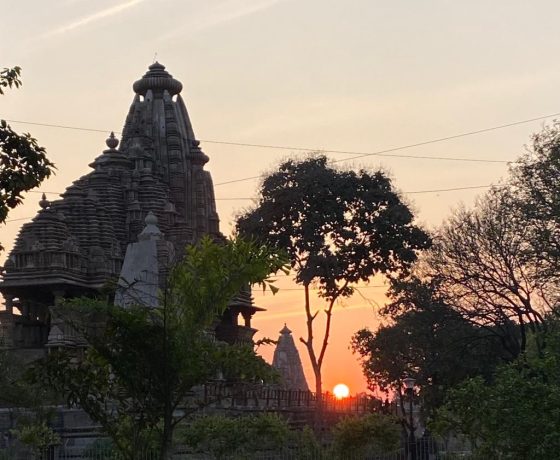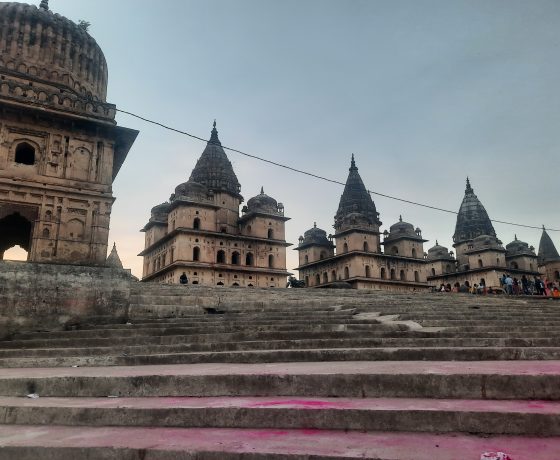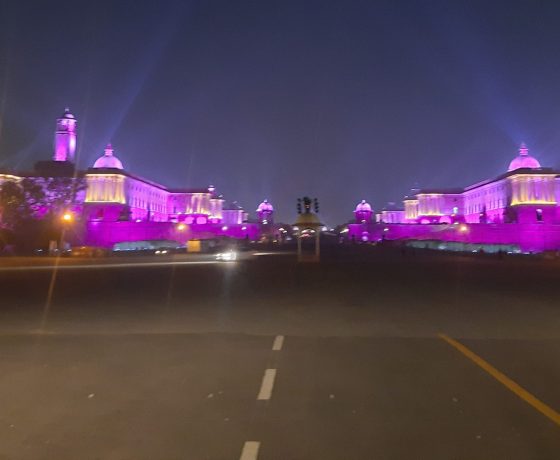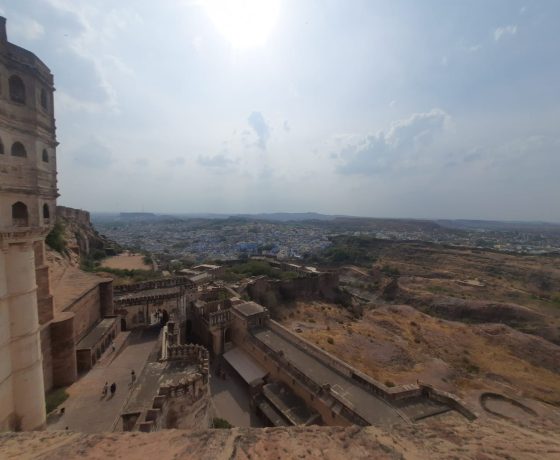Royal Rajasthan Tour
Royal Rajasthan Tour
This tour package covers the important touristic destinations of Rajasthan. This package includes the visit to Jaipur, Pushkar, Jodhpur, Ranakpur , Udaipur and of course The Taj Mahal –a mejetic beauty. In this tour you will visit some of the major tourist destinations of Rajasthan and gives you an insight into the culture and rich heritage of Rajasthan. Some of the highlights are; a gourmet tour in streets of Old Delhi; an elephant ride at Amber Fort; a walk in old lanes of Jodhpur city; performing a ceremony as homage to your forefathers at the holy Pushkar lake and experience of the boat ride in beautiful Lake Pichola at Udaipur.
Tour Program
Arrive in Delhi today and get transferred in a private vehicle to your hotel where accommodation is held from 1400 hrs. Check-in and spend the rest of the day to explore the bustling national capital. Overnight in the hotel.
Delhi offers a harmonious blend of architecture and history. From remnants of the Mughal empire and British Raj to contemporary India, you can experience it all in the capital. The city is sure to charm you with its eclectic mix of the old and new – from magnificent monuments to bustling Old Delhi markets and stunning high rises.
Full day excursion to Old and New Delhi, exploring the medieval and pre-modern faces of the historic capital of India personified by the Jama Masjid and Chandni Chowk (closed on Sundays). Take a food walk in the Chandni Chowk market. In Afternoon visit Humayun’s Tomb and Qutub Minar. Overnight in the hotel.
Jama Masjid is a mosque in Old Delhi, constructed in 1650–56 by the Mughal emperor Shah Jahān, a noted patron of Islamic architecture whose most famous work is the Taj Mahal, in Agra.
This vibrant market came to existence when the fifth Mughal Emperor, Shah Jahan, shifted his capital from Agra to Shahjahanabad, now Old Delhi, in the mid 17th century. While Chandni Chowk or the moonlit square no longer bears the magnificence of the bygone era, its importance in the annals of Delhi will never be lost.
The food walk in Old Delhi is a great experience to and the best way to see and taste Old Delhi. The dishes one can savor in Old Delhi Food Walk are large, thick and juicy jalebis, glistening with ghee; Aloo chaat crisp fried potato cutlets dunked in a melange of chutneys and smattered with onions and spices ; varieties of stuffed paranthas potato, onion, cottage cheese, cauliflower, radish, dry fruits and many more….
Humanyun’s Tomb was built in 1565 A.D. nine years after the death of Humayun, by his senior widow Bega Begam. Inside the walled enclosure the most notable features are the garden squares (chaharbagh) with pathways water channels, centrally located well proportional mausoleum topped by double dome.
Qutab Minar is a soaring, 73 m-high tower of victory, built in 1193 by Qutab-ud-din Aibak immediately after the defeat of Delhi’s last Hindu kingdom. The tower has five distinct storeys, each marked by a projecting balcony
Today morning after breakfast drive to Agra, arrive and check – in at the hotel. In the afternoon proceed for half day tour of the magnificent Red Fort and the Moonlight Garden. Overnight at the hotel.
Known to exist since prehistoric times, Agra came into full flower during the 16th and 17th centuries as one of the four capitals of Mughal dynasty. It was in Agra that the artistic excellence of the Mughals reached its zenith at a time that coincided with the political high water mark of their vast and expanding empire.
Agra Fort was begun by Akbar between 1565 and 1573. It is situated on the west bank of the Yamuna River, about 2km upstream from the Taj Mahal. Akbar built the fort of sandstone; his grandson Shah Jahan, the builder of the Taj Mahal, constructed palaces of white marble within the fort itself.
The Mehtab Bagh or the moonlight garden, was the last of the eleven Mughal-built gardens along the Yamuna river opposite to the Taj Mahal and the Agra Fort. Built during the period 1631- 1635 A.D., Mehtab Bagh literally means “a moonlit pleasure garden”.
The Taj Mahal is an enormous mausoleum complex commissioned in 1632 by the Mughal emperor Shah Jahan to house the remains of his beloved wife. Constructed over a 20-year period on the southern bank of the Yamuna River in Agra, the famed complex is one of the most outstanding examples of Mughal architecture, which combined Indian, Persian and Islamic influences
An erstwhile princely state and now the capital of modern Rajasthan. Jaipur is popularly known as the “Pink City” because of the rose coloured wash that adorns most buildings in the old quarter and it is the first planned city in the country.”
After breakfast visit Amber Fort, the grandest way to reach Amber is on an elephant back. Later we proceed to visit the City Palace and Observatory. And we also stop for some photos from across the road of Hawa Mahal – the Palace of Winds. In evening attend aarti or a prayer ceremony at Birla Mandir. Overnight in the hotel.
The City Palace reflects Rajput, Mughal and European architectural styles. The Palace has been designed according to a ‘grid style’ and houses various structures such as, ‘Chandra Mahal’, ‘Mubarak Mahal’, ‘Diwan-I-Khas’ and the ‘Govind Dev Ji Temple. The walls and gates are ornately designed to Mughal style, with various murals, lattice and mirrors adorning them from sides.
The Jaipur observatory is by far the most elaborate and complete of Jai Singh’s all other Observatories. The observatory occupies a plot of land just outside the City Palace.
Jaipur’s most photographed landmark, the Hawa Mahal is an extraordinary pink-painted delicately honeycombed hive that rises a dizzying five storeys. It was constructed in 1799 by Maharaja Sawai Pratap Singh to enable ladies of the royal household to watch the life and processions of the city.
The Birla Temple, of Jaipur is built of pure white marble, whose interiors contain, beautifully sculpted idols of Lord Vishnu and Goddess Lakshmi, as well as other Hindu Gods. Commonly considered a true work of art, this temple forms a wonderful backdrop to witness a traditional ceremony.An Aarti represents the elements of fire, earth, water and air as well as the senses, the priest has a tray with a diya (lamp), offerings of food, water, flowers, incense and a small bell.
After breakfast visit leave for Pushkar by surface, a journey of about 3hrs. In the Afternoon visit the Brahma Temple and also perform a ceremony as homage to your forefathers at the holy Pushkar Lake. Overnight in the hotel.
Pushkar a holy little town; a pilgrimage for some and a hermitage for others. This little town a 135 km down south of Jaipur has its own charm. The very air of the place is different from any other village or city of India. The city dwells around the holy lake and the whole economy, society, tourism and devotion is in the crescent shaped road along the lake and is famous for Brahma temple Pushkar.
Brahma Temple in Pushkar is one of the few temples dedicated to the Lord Brahma – the creator of everything. The temple is made of stone stabs and marble. The red-colored shikara is a distinguishing feature of the temple. This temple is said to be 2000 years old. Although the original temple was destroyed during the rule of the Muslims, it was again re-built. The temple that we see today is said to have been built in the 14th century. The temple had been renovated a number of times but it still retains its originality.
The Pushkar Lake is a semi-circular shaped sacred water body, also known as ‘TirthaRaj’. According to the Hindu mythology, the lake was created from one of the petals that fell from the lotus flower with which Lord Bramha killed the demon Vajra Nabh. The Pushkar Lake is surrounded by more than 300 temples and has 52 ghats, where devotees take holy bath. It is a belief that if a person takes a holy dip in the lake on Kartik Purnima, then that person attains salvation it is also a belief that taking a sacred bath in the lake clears one from all sins and that it cures all skin diseases.
* About camel fair: If you are in India in the month of Oct-Nov you can visit Camel Fair which is held in Oct – Nov months for 10 days, so if you lucky to be in India during this period you can include the fair in your tour.
* Camel fair dates depend on lunar calendar and it is just a 10 days fair for which you have to plan in advance.
After breakfast visit leave for Jodhpur by surface, a journey of about 4hrs. In the afternoon visit the Mehrangarh Fort, take a walk from the fort till clock tower wherein you will pass by the very famous blue houses. Take a photo stop at Jaswant Thada. If time permits visit the Umaid PalaceMuseum. Overnight in the hotel.
Mehrangarh Fort stands a hundred feet in splendor on a perpendicular cliff, four hundred feet above the sky line of Jodhpur. Burnished red sand stone, imposing, invincible and yet with a strange haunting beauty that beckons . Much has been written about the Citadel of the Sun, for truly, it is one of the most impressive in all Rajasthan. So colossal are its proportions that Rudyard Kipling called it “ the work of giants”. Today, it is acknowledged as one of the best preserved fort in India.
Umaid Bhawan Palace Museum is fully dedicated to the history of Umaid Bhawan Palace. It showcases pictures of the palace, taken at different points of time and retells the story of how Maharaja Umaid Singh was keen on Western architecture and appointed a well-known Edwardian architect to create this palace in the Art-Deco style. A very unique antique clock collection and a huge banner presented by Queen Victoria hold special interests for the tourists. There are many more interesting artefacts belonging to the royals, ranging from cutleries, trophies and weapons. And of course, don’t forget to check out Maharaja’s vintage car collection.
After breakfast visit leave for Udaipur by surface, en-route stopping at Ranakpur Temple. A journey of about 7hrs. Arrive in Udaipur, check – in at your hotel. Evening is at leisure. Overnight at the hotel.
Ranakpur is home to one of the biggest and most important Jain temple complexes of India, covering an area of nearly 48,000 square feet area, and has 29 halls, 80 domes and supported by 1444 marble pillars, each of them intricately and artistically carved, yet no two of them are alike. The Ranakpur Jain Temple was built by a wealthy Jain businessman named Dharma Shah under the patronage of the liberal and gifted Rajput monarch Rana Kumbha in the 15th century.
After a leisurely breakfast proceed to visit this charming Udaipur city. We start the tour from visiting the Sahelion ki bari, Jagdish temple and from the temple you can take a short walk till the city palace. In the evening enjoy a boat ride on Lake Pichola. Overnight at the hotel.
Built by Maharana Bhopal Singh Saheliyon ki Bari means Garden of the Maids. This garden area lies in northern part of the city and has fountains and kiosks, a lotus pool and marble elephants. Each water channel has its distinct sound and the mingling of these sounds complement the ambience of the place. Sahelion Ki Bari’ was laid for a group of forty-eight young women attendants who accompanied a princess to Udaipur as part of her dowry.
Located 150meters north of the city palace built in Indo-Aryan architectural style, the Jagdish temple is dedicated to Lord Vishnu. The temple walls and the shikara or tower are decorated with carvings of Vishnu, scenes from Lord Krishna’s life and figurines of nymphs or apsaras.
The grand City Palace, towering over the Pichola Lake, is one of the largest palace complex in Rajasthan. The splendid palace, originally built by Maharana Uday Singh II, rises 30 meters above Lake Pichola and extends up to 244 meters. The City Palace has number of small and big palaces, museums and the gardens. The unique aspect of this conglomeration is that the architectural design (a rich blend of Rajasthani, Mughal, Medieval, European and Chinese Architecture) is distinctly homogeneous and eye catching. The palace complex has been built entirely in granite and marble.
An artificial fresh water lake, created in the year 1362 AD, named after the nearby Picholi village. The Pichola lake’s surroundings and the several islands within the lake have been developed over the centuries, with palaces, marble temples, family mansions, and bathing ghats.






